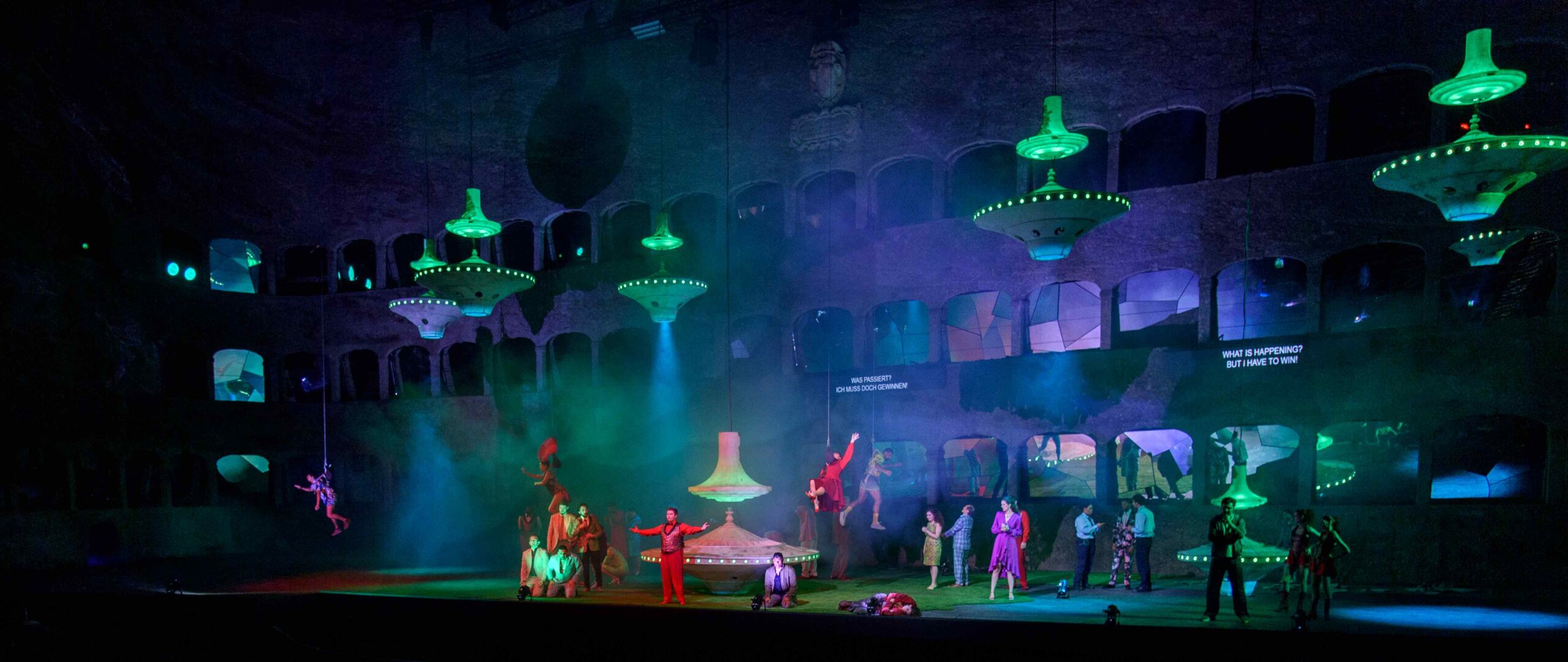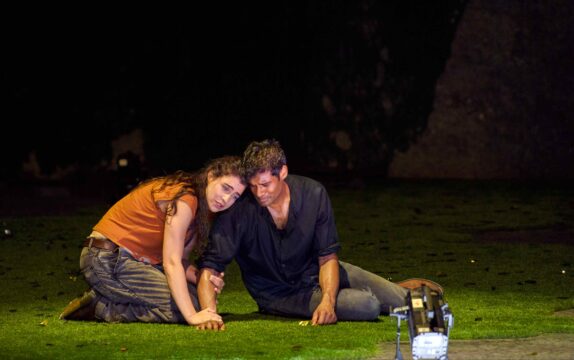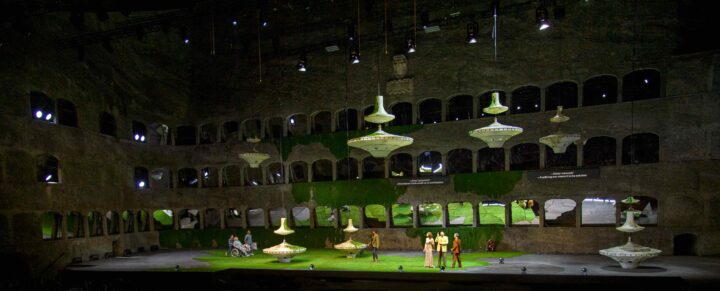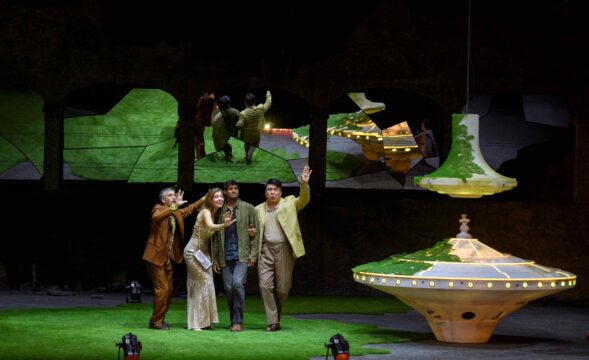The argument inspired by Dostoyevsky’s dizzying autobiographical novel
In Roulettenbourg, an imaginary city of Germany, the casino attracts many tourists. Alexej Iwanowitsch accompanies a general as tutor of his two young children and Polina, whom he is deeply in love with. The general, for his part, has infatuated with Blanche, a half-mondaine who is only interested in her money. The general has now gone into debt to the marquis who, on his side, covets Polina. All are waiting for the death of Aunt Babulenka to seize her enormous inheritance.
To the surprise of the protagonists, the general’s aunt arrives unexpectedly. The latter, aware of the general’s schemes, becomes dependent on gambling and lost at the casino almost all his fortune. Blanche leaves the general ruined. To seduce Polina, Alexej Iwanowitsch manages to win considerable sums at the roulette but the girl pushes him away leaving him in a deep state of despair.
The Gambler is inspired by the autobiographical novel of Fiodor Dostoyevski who, like his main character, was a compulsive gambler who for years could not get rid of what he himself called «a disease».
The Gambler has been adapted into seven films, including a 1949 American film by Robert Siodmak with Gregory Peck and Ava Gardner, and a 1958 French-Italian film directed by Claude Autant-Lara with Gérard Philippe.
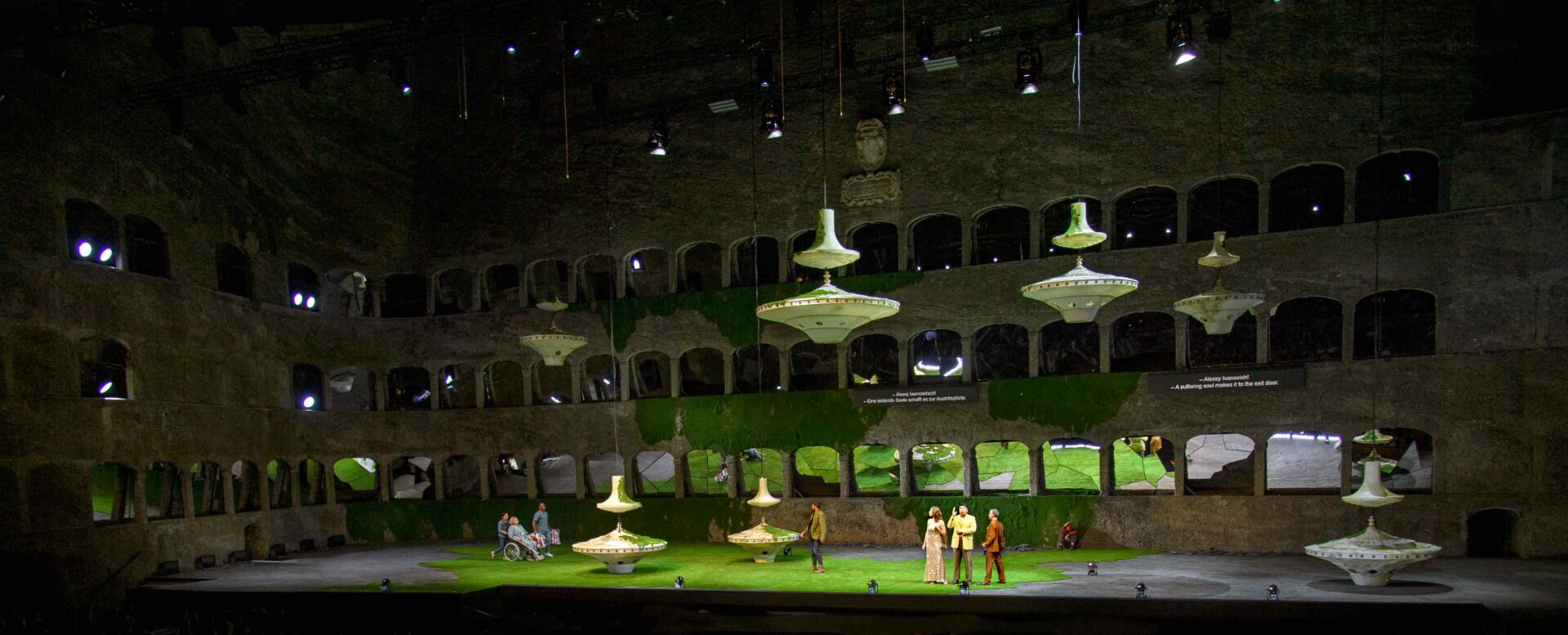
Prokofiev’s Opera despised in Russia and almost ignored for nearly half a century by the rest of the world
Composed between November 1915 and January 1917, the work was first declared « not could be sung». Then the Russian revolution came and marked a halt, and Prokofiev was only able to make numerous changes to his score until 1927. The work was only an ephemeral creation on 29 April 1929 at the Royal Theatre de la Monnaie in Brussels under the direction of Maurice Corneil de Thoran, curiously in a French version (!). The composer would never succeed in having his opera performed in Russia during his lifetime. It was only six years after his death (1953) that the Russians discovered a radio version of The Gambler (1963), which was performed at the Moscow Bolshoi only in 1974! Europe was only interested in it in the 50s and it took until 1975 for the Metropolitan Opera of New York to welcome it!
An opera in the style of «radical »in the form of «musical prose»
The musical style «as radical as possible» (in Prokofiev’s own words) makes The Gambler a «dialogue opera» in the form of musical prose without any concession to the cantabile. We are, even beyond the «conversation in music» of Richard Strauss.
None of the characters has – in the sense of the lyrical repertoire of the 19th century – real arias and it is left to the orchestra to provide psychological comments on events, what he does in the most modern language that Prokofiev could have conceived in the years 1915.
The Gambler remains today for a «traditional» audience a specific demanding experience that involves an act of empathy on the part of the western listener to engage in a musical tradition where the «normal» operatic expectations are deliberately not satisfied.
In his book, Piotr Kaminski 1 points out with relevance: « These are indeed the orchestral colors to which the characterization of the obsessive universe of the casino is entrusted… the opera folds under prose, the drama being neither lived nor played but mostly reported in exchanges between characters … The portraits of the two protagonists are highlighted, Alexej passionate and whimsical and Polina mysterious and torn… At the top: the 2nd painting of the 4th act, the nightmare rondo of a quarter of an hour, masterpiece of musical dramaturgy, of a demonic rhythmic virtuosity in the casino scene...».
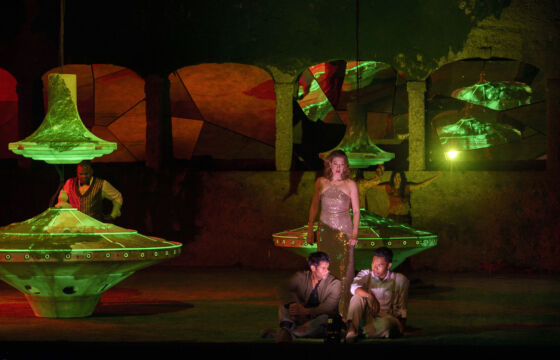
The Georges Tsypin’s scenography : a nightmarish nocturnal universe
Georges Tsypin’s scenography is part of a deliberately contemporary vision of an oppressive and nightmarish universe. While the Prokokiev Opera takes place in different locations, the action is confined to a single location. The American decorator makes partially invade the immense plateau of Felsenreitschule, carved in the Mönchsberg, by the moss and the greenery that roe thus soil, walls and even play tables while the stone arcades are closed by mostly fractured mirrors. He adds to these places in disgrace and partially gangrenous huge roulette suspended from wire, kinds of imposing chandeliers that at times start to turn quickly so that these tables of games resemble threatening spaceships appearing, in their descent, attack (or want to crush) the characters who move like insects crawling on the ground. Sometimes they stop and sometimes they turn with streaks of lights arranged along their flanks.
The extraordinary work on lights by James F. Ingalls is noteworthy. They contribute much to the scary side of the show with their violent reflections, day and night, and especially when the game tables, in the form of saucers, swirl with their flashing and fluorescent lamps, to give the viewer the impression of watching a science fiction film.
The different characters are in current costumes (signed Camille Assaf), Alexeï and Polina are in jeans, jackets and rangers. On the T-shirt of Polina we will note an inscription «All or nothing».
The Peter Sellars staging: a race anguished towards the abyss
In his staging, Peter Sellars has completely freed himself from the «Russian» atmosphere as we can for example apprehend it in the production of the Marinsky theatre of Saint-Petersburg of 2012 under the baton of Valéry Gergiev (with, in the role of Alexej Iwanowitsch, Vladimir Galouzine).
In this production, although refined on the stage plan, the costumes were nevertheless «dated» with respect to the time (19th century) and the atmosphere bathed in a significantly Slavic climate. The same applied to the production that the Monte-Carlo Opera had put on in 2016, directed by Jean-Louis Grinda.
Peter Sellars wanted to create a climate of constant anxiety in a scenario that is marked by a vertiginous addiction to gambling (let’s not forget that Dostoyevsky himself was prisoner of this addiction which he expressed in his novel).
The director uses throughout the action mobile phones whose handling replaces letters that were sent to each other in the last century. This means of communication between the characters will also serve as a quasi-obsessive process to shift from dream – or more accurately, nightmare – to reality. In the first case, the bright atmospheres will mostly opt for dark red, while in the second case, the rather raw light will alternate between blinding white or screaming green. Moreover, money, materialized in the traditional staging by banknotes, no longer exists and everything happens in fact through mobile phones.
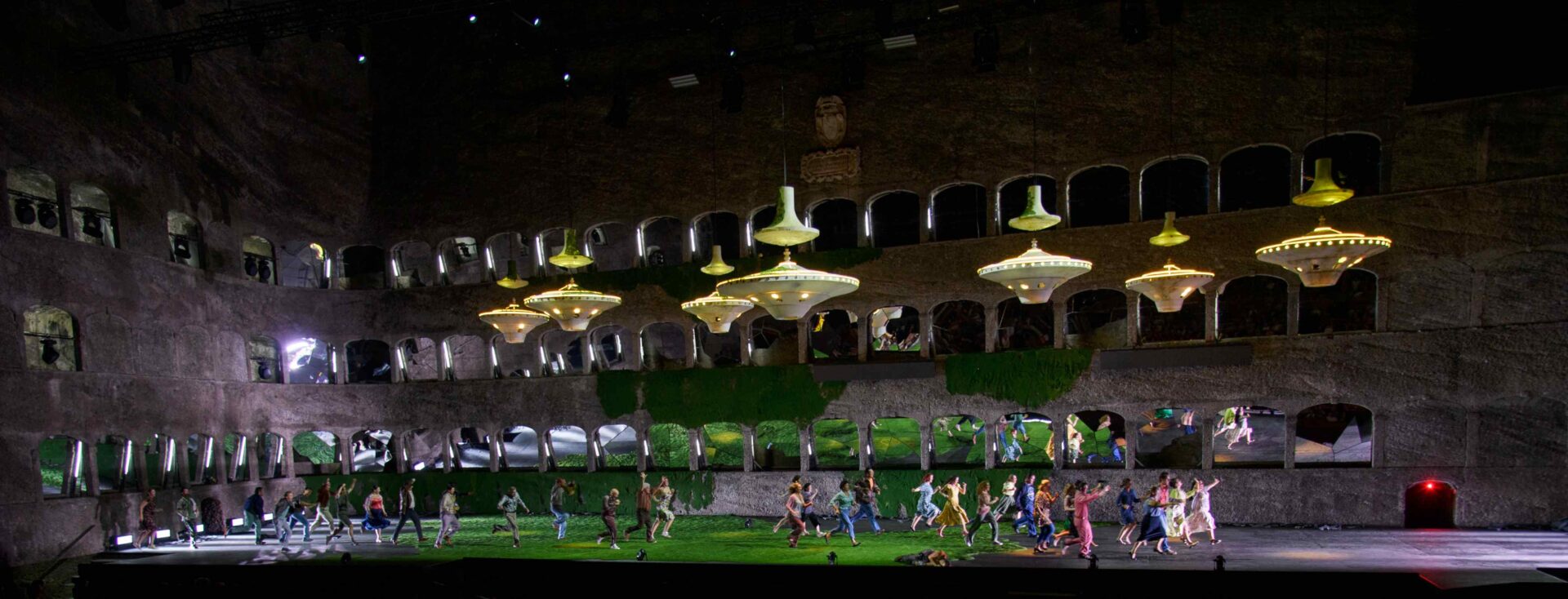
The Gambler is a race to the abyss, where each of the characters is driven to madness with extravagant acts (for example, when Alexey stains the baron’s costume) mixed with violence generated by a self-destructive obsession. None of the couples formed in this story has any chance of perpetuating themselves as such. In addition, the relationship «money-love» and the theme «attraction-rejection»
are generating an impossibility of survival. The general will be abandoned by Blanche in favor of Prince Nilski while a sado-masochistic «relationship» seems to be established between the marquis and Polina, young girl confused, torn between a real life without exit and what could be a love affair with Alexej. But this one is based on an obstacle marked by a paradox: that of the money that Alexej can (and will) win at games and that far from building a link will instead destroy it.
In the apparent intense agitation of this nighttime nightmare where the protagonists come and go, one can only notice, surprisingly, the extreme coherence and fascination that results, In this way, the narrow framework of the paintings is being shattered in a world where madness and neurosis reign supreme. The point of the nightmare is also reached by the fact that Polina – unlike the “classic” versions – never leaves the stage and when she is not involved in the action, she remains on set, immersed in her hallucinations and fantasies.
It is also worth mentioning that this production owes to the extraordinary direction of actors by Peter Sellars. In the immensity of such a hall, and if one is not placed in the very first ranks, one loses a multitude of details that are inherent to the game of the singers-actors and all the more so because the work implies that all performers are almost permanently on stage.
After seeing the in situ show – which is our case – we can see more of this extremely precise, meticulous and particularly thorough work of directing actors by watching the video of this production that leaves a very large space for close-ups (and it is hoped that this video, broadcast on the channel Mezzo-Live, will later be the subject of a DVD by imagining that it will, for the circumstance with subtitles – considering that the original language is Russian – the television retransmission does not offer this possibility)
An impressive cast of outstanding «singer-actors»
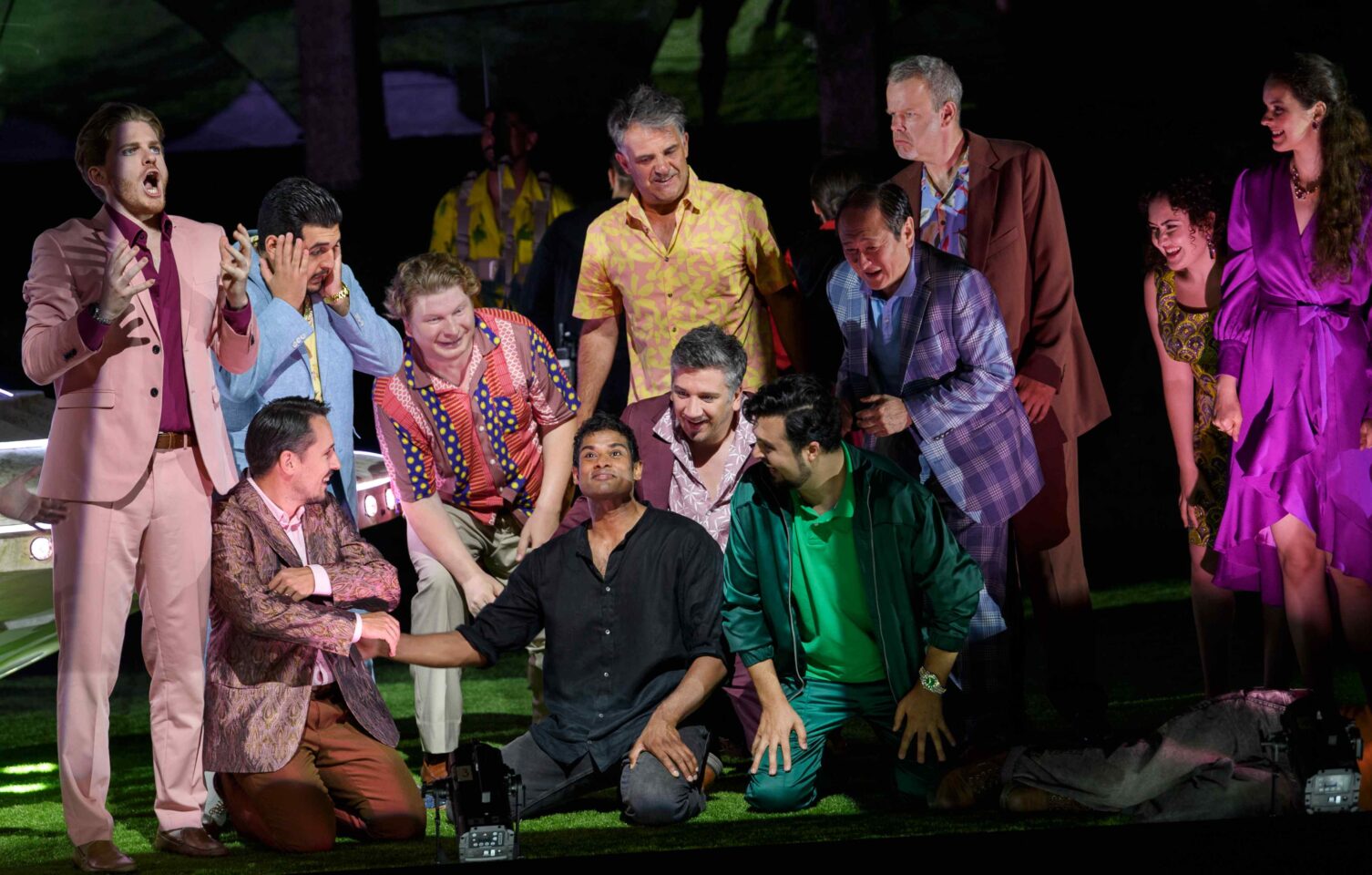
Alexej
The role of Alexey is particularly compelling since he almost never leaves the stage. Nervous, unstable, sometimes violent, he is the victim of his love for Polina and far from saving him, his gain in gambling will lead to his loss.
This powerful job demands a dramatic tenor’s range that combines both the breadth of the voice and the power of the high notes, in addition to the underlying but relentless dramatic implication of a tormented being. In this capacity, the Sri Lankan tenor Sean Panikkar fulfills his contract beyond all hope by giving his neurotic character an undeniable impact where his strength and conviction are not not can be faulted at any time.
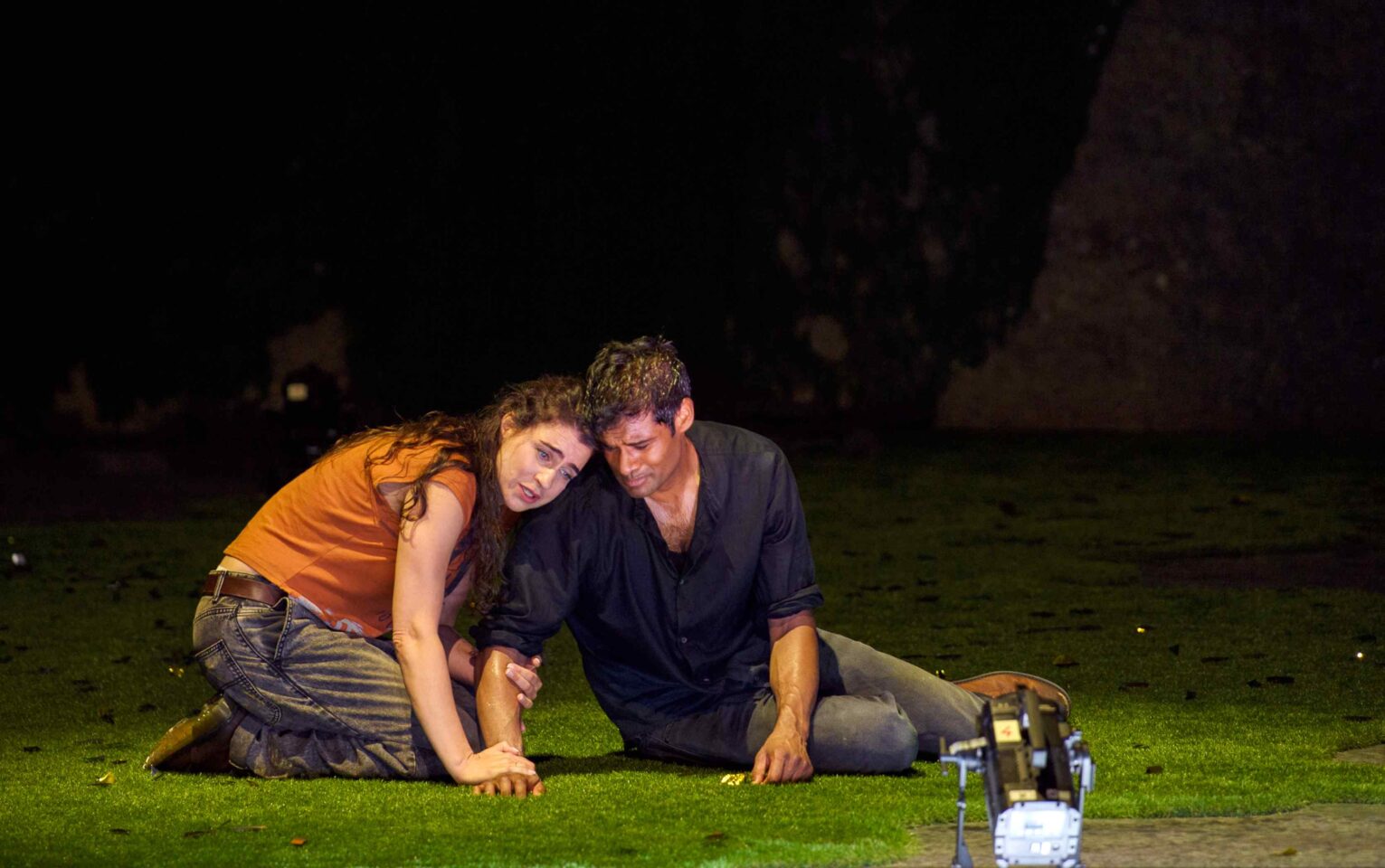
Polina
Alongside her, and in the role – which may seem a priori secondary – of Polina, the festival has retained the international star of the lyric art : Asmik Grigorianan artist a festival regular. We will remember that she was Chrysothemis in Elektra, Salome by Richard Strauss, the triple female incarnation of Puccini’s Triptych, Lady Macbeth in Verdi’s Macbeth without counting a multiplicity of roles on all the greatest scenes of the world.
The Lithuanian soprano brings to the role of Polina – once again – this extraordinary interpretative genius that belongs only to her. In wide jeans, washed-out t-shirt, rangers and loosened hair, she makes this character an ambiguous and fragile being completely paranoid, divided between love, money, desire, rejection, submission, disgust and a deep sadness inherent in his instability. Even if she sings only occasionally, she is constantly on stage, often asleep, in fetal position, and prey to dreams and nightmares. In the last scene, in a fit of hysteria, she first pushes away Alexej then agrees for a few minutes to contemplate a future with him and finally abandon him permanently to his loneliness and despair.
The close-ups of the video retransmission allow us to contemplate its multiple expressions of the face of this extraordinary singer-actress where pass successively the doubt, irony, desire, contempt, anxiety, melancholy, lassitude, sensuality.
As usual, the sublime interpretation of this artist, who is gifted in dramatic terms, is complemented by an admirable vocal science with a timbre of ineffable beauty (the use of the melody repertoire gives her this innate sense of phrasing and parlando) and means that seem without limits (it is enough to remember his performances in loco in Lady Macbeth or more recently in the role of Turandot at the Vienna Opera).

Babulenka
One can only bow to Violeta Urmana’s Babulenka, whose prestigious career as a dramatic soprano in a vast repertoire is well known. The voice has retained its ample dimension and the actress delivers a magnetic incarnation of this woman who comes halfway to upset the order of things by indulging in a frenetic way in a disorderly passion for play. How can I not think, in some aspects, of the Countess of The Queen of Spades by Tchaikovsky?
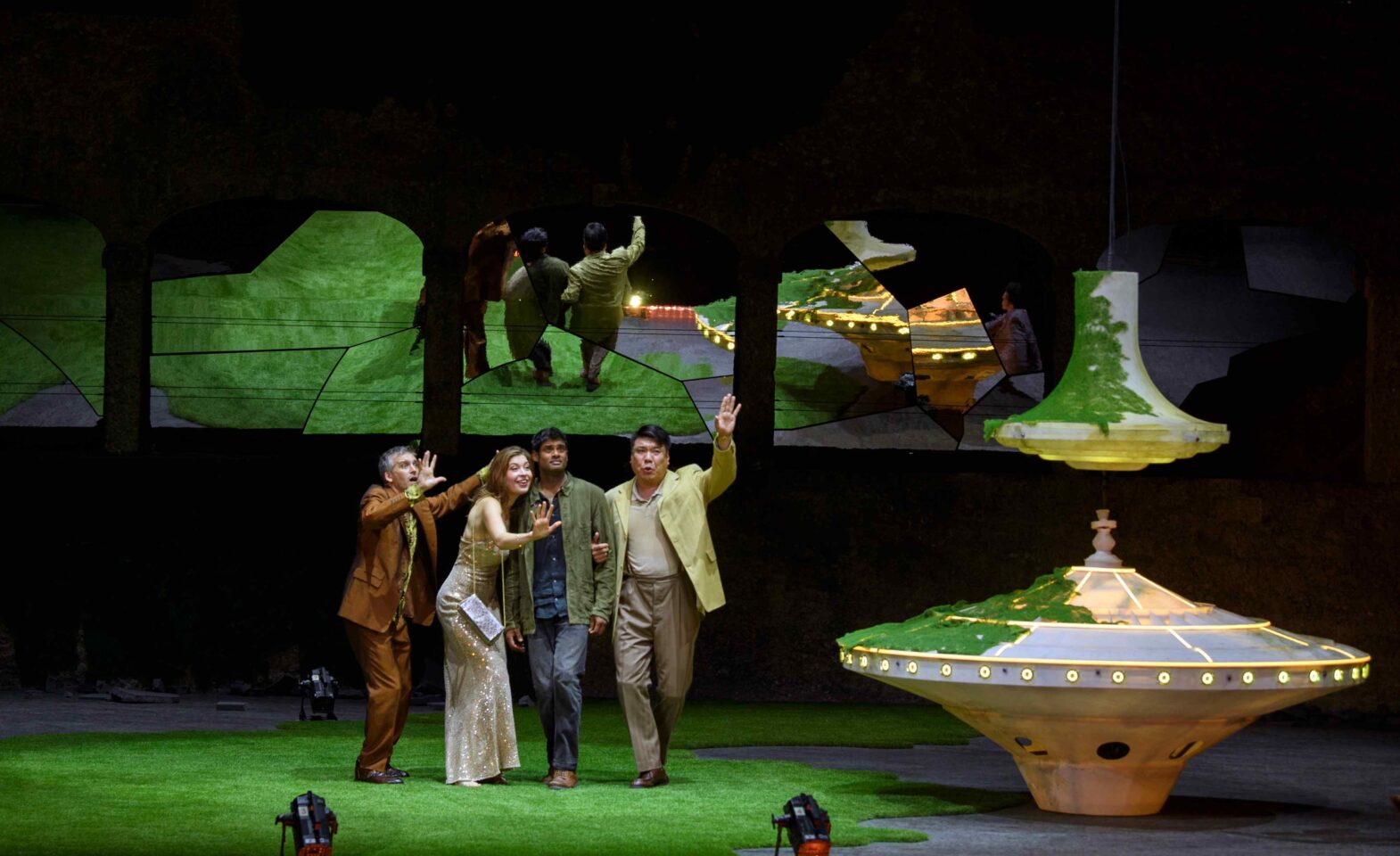
The general
It is the Chinese bass Peixin Chen who is entrusted with the very complex role of the general, to whom he brings the required power, Also involved in the evolution of a character with perfect confidence who ends up falling into a pathetic distress abandoned by his mistress at the moment of her reversal of fortune (Blanche will indeed prefer to follow prince Nilski).
The Marquis
And if we were to also assign a palm interpretation, it would certainly come back to the tenor Juan Francisco Gatell who draws, in a hallucinating composition, a marquis, cynical, debauched and perverse, epileptic and devoured by feverish tics, a venomous as well as libidinous snake, eager for compulsive sex.
Blanche
To note the beautiful interpretation of the Ukrainian mezzo-soprano Nicole Chirka in Blanche de grande allure.
The second roles
One of the difficulties of this opera involves, in addition to a already numerous distribution of soloists, a multitude of second roles that will occupy the stage during the last act, when Alexej will appear in the casino: director, croupiers, clients… who are about twenty singers and are truly full-fledged soloists.
Here, we are dazzled by the admirable vocal quality of each of these characters and many of these second roles would probably be the good days of many of our theaters in the main jobs! Samuel Stopford is a top-notch croupier.
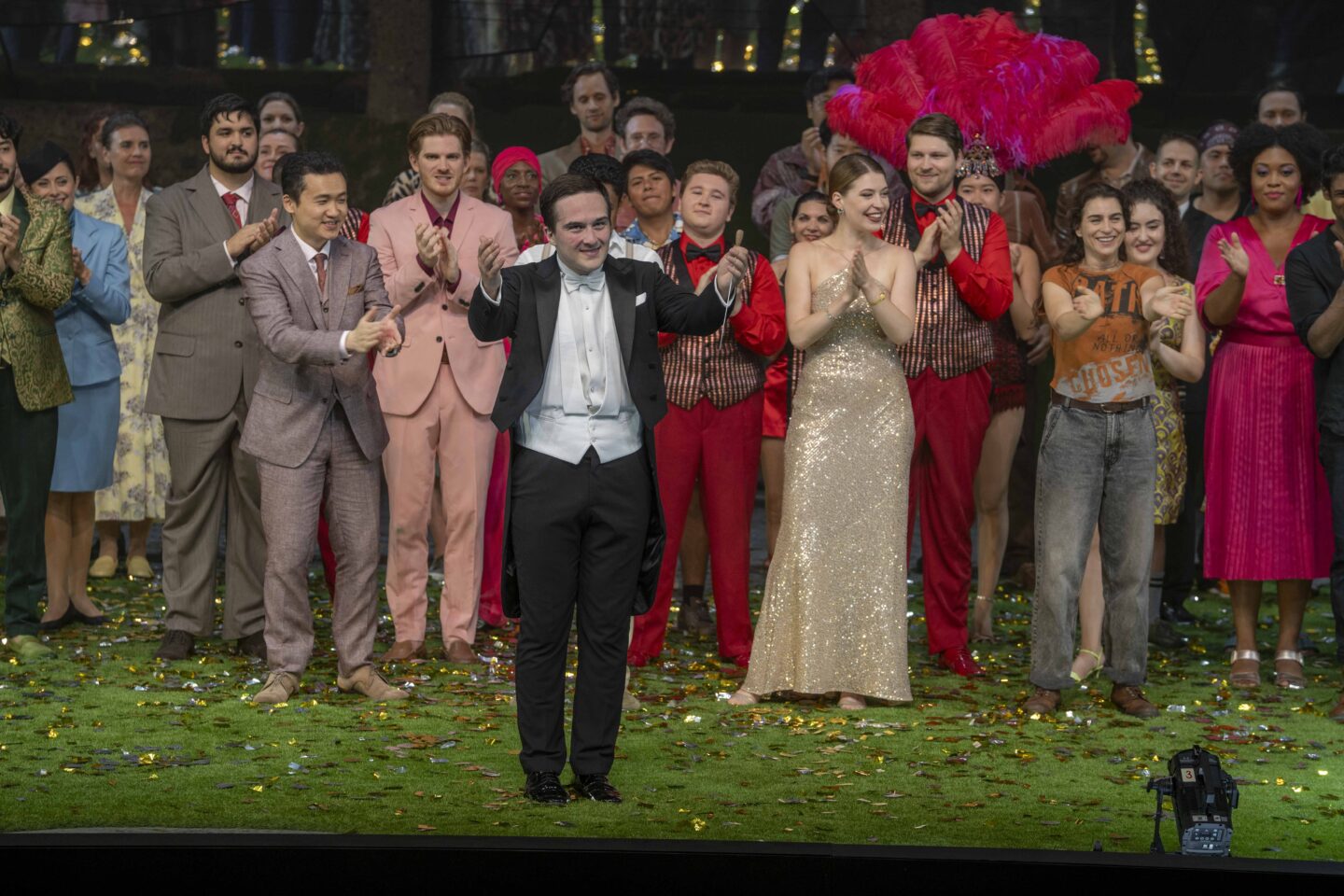
A brilliant and grandiose musical direction by Timur Zangiev
The musical direction is led by the expert Timur Zangiev baton, one of the most prominent and sought-after conductors of his generation. At the age of 30 he has already conducted more than fifty productions of operas, ballets and many symphonic operas and worked with many orchestras, not only in his native Russia but also abroad with great international orchestras. He conducted with the rigour and power that imposes this infernal polyphonic tourbillon making the Vienna Philharmonic Orchestra shine with a thousand fires. The choir of the Vienna Opera was at that evening at the same height as the musical phalanx with which it is permanently in osmosis.
Despite an opera known to be musically difficult and for some esoteric, the public gave a very warm welcome to this production and to the artisans of this show and a deserved triumph for the main protagonists but also for the orchestra and the sumptuous choir as well as for the musical direction admirably mastered by Timur Zangiev.
Christian Jarniat
20 août 2024
1 Piotr Kaminski « Mille et un opéras » Fayard
Conductor : Timur Zangiev
Regie : Peter Sellars
Sets : George Tsypin
Costume : Camille Assaf
Lights : James F. Ingalls
Dramaturgy : Antonio Cuenca Ruiz
Distribution :
The Général: Peixin Chen
Polina :Asmik Grigorian
Alexej Iwanowitsch: Sean Panikkar
Babulenka: Violeta Urmana
The Marquis : Juan Francisco Gatell
Mr Astley: Michael Arivony
Blanche: Nicole Chirka
Prince Nilsky: Zhengyi Bai
Baron Würmerhelm : Ilia Kazakov
Potapytsch: Joseph Parrish
The Casino manager : Armand Rabot
The first Croupier : Samuel Stopford
Vienna Philharmonic Orchestra
Vienna Opera Choir
